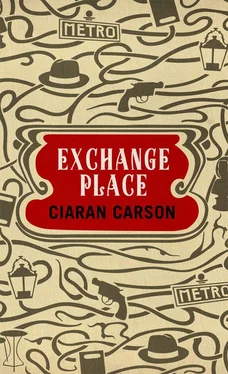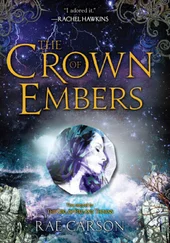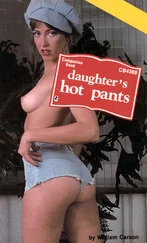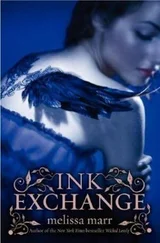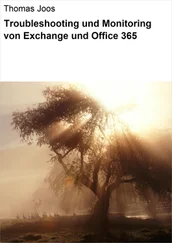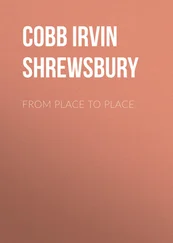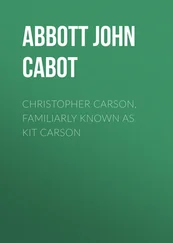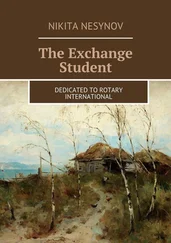As I researched Bill and Ben I looked up another children’s TV series of the early 70s, Mr Benn . In each episode Mr Benn, wearing a black suit and bowler hat, leaves his house at 52 Festive Road and visits a fancy-dress costume shop where he is invited by the moustachioed, fez-wearing shopkeeper to try on a particular outfit. He leaves the shop through a magic door at the back of the changing room and enters a world appropriate to his costume. The series also appeared in book form, and I quote from one: ‘Mr Benn changed into the space outfit in no time. He looked at himself in the mirror and then headed for the door that always led to adventures. On the other side he found himself in a spaceship.’ Towards the end of the narrative, as always, the shopkeeper reappears to lead him back to the changing room, and the story ends. Mr Benn returns to his normal life, but is left with a small souvenir, proof of his magical adventure. I pictured myself in the changing room, looking at myself in the mirror dressed as an Arabian prince, about to embark on the Magic Carpet adventure.
As for the Flower Pot Men, they spoke a mangled idiolect which sounded like English but not quite. Flobbalob Bill. Flobbadob Ben . After the Red Leb episode, we referred to each other as Bill and Ben. Some people called us Bee and Kay, others, John and John, the two Johns. Red Leb, must have been around 1974, said Beringer, I think I remember someone gave me a blast of Red Leb after the Smithfield fire-bombing, and we began on one of our reminiscences of the vanished Smithfield Market and its glassed-over arcades, its nave and transepts crossed by narrow passages lined with sagging bookshelves, old furniture and bric-a-brac. It was in Smithfield that I first came across Cathal O’Byrne’s book about Belfast, As I Roved Out , and the Smithfield of my dreams would be haunted by his, a veritable rookery of hallways, alleyways and gangways, leading up to balconies — each with its nest of dwelling places — higher and ever higher. I glide through Smithfield like a revenant from the future. At a bookstall I look over the shoulder of the young man who stands immersed in a book, the reader who was me.
It’s like another world, says Beringer. For all we know it exists in another world where Smithfield didn’t get firebombed. As do we, only different, I suppose, you know, Many Worlds theory. Quantum incoherence, don’t expect me to give you the maths of it, but in layman’s terms, I mean our terms, it means reality is like a tree with an infinite number of branches, an infinite number of outcomes. Many Worlds accounts for that, as many worlds as there are possibilities. Didn’t you have something in that book you were writing, what was it called, XYZ , what ever happened to that?
He was right. One of the sources quoted or paraphrased in my abandoned book, X + Y = K , was the Irish experimental physicist Fournier d’Albe, who in his book, Two New Worlds , published in 1908, proposed a hierarchical clustering model for the structure of the universe which anticipated modern fractal theory. Fournier’s fractal was a snowflake pattern consisting of five parts; each of those parts was a miniature copy of that snowflake; those miniature copies were composed of still smaller snowflakes, and so on, in a dizzying blizzard of self-replication. Worlds lay within worlds in nested frequencies. Atoms and stars, electrons and planets, cells and galaxies all moved to the same measure. Clouds, earthquakes, river deltas, root systems, coastlines, music, fluid turbulence, the fluctuations of the stock market: all corresponded. A flag snaps back and forth in the wind, and a column of cigar smoke breaks into an anxious swirl. A pirouette of litter on a street corner heralds a tornado. A pin drops in an auditorium, a bomb goes off. Like patterns were apparent everywhere. The All was immutable, but the detail was ever new. The event, the incident, the individual was unique, unprecedented, irrecoverable; but the equilibrium was eternal, and death could have no dominion over the infinity of worlds.
Given these wide parameters, Fournier d’Albe thought it reasonable to assume that one could find a portal to that infinity of worlds, or at least to a parallel world. He immersed himself in the study of paranormal phenomena, including the mediumistic seances of the time. Of particular interest to me was the fact that in 1921 he investigated a spiritualist group in Belfast known as the Goligher Circle, centred around the sixteen-year-old medium Kathleen Goligher, who claimed to be in contact with a spirit world, the Other Side. Seances were conducted in the attic of their own home. Fournier d’Albe was curious to see if the phenomena that appeared to occur there could be replicated at a neutral location, and to that purpose he rented an unfurnished attic at 14 Exchange Place, a narrow lane — an entry, in Belfast parlance — off Lower North Street. After subjecting Kathleen Goligher to a series of rigorous controls he concluded that the ‘paranormal phenomena’ produced by her in collaboration with the Circle were nothing more than cheap conjuring tricks. Of further interest to me was the fact that John Harland had rented an attic at 14 Exchange Place for some months prior to his disappearance in the year 2001.
In Passage des Panoramas Kilpatrick stopped and ordered a coffee at a table outside Gocce di Caffè. The Drop of Coffee. From his briefcase he took out Rue des boutiques obscures , the Patrick Modiano novel he had bought in St Sulpice. Published by Gallimard, 1978. Gallimard also published the complete works of Jean Cocteau, he remembered. He read the blurb on the back cover of Rue des boutiques obscures .
Qui pousse un certain Guy Roland, employé d’une agence de police privée que dirige un baron balte, à partir à la recherche d’un inconnu, disparu depuis longtemps? Le besoin de se retrouver lui-même après des années d’amnesie? Au cours de sa recherche, il receuille des bribes de la vie de cet homme qui était peut-être lui et à qui, de toute façon, il finit par s’identifier: What impels a certain Guy Roland, employee of a private detective agency overseen by a Baltic baron, to leave in search of an unknown man, long since disappeared? The need to find himself again after years of amnesia? In the course of his search, he recollects fragments of the life of this man who is perhaps himself, and who, in any case, he ends up identifying with.
He turned to the beginning of Rue des boutiques obscures and read the opening sentences: Je ne suis rien. Rien qu’une silhouette claire, ce soir-là, à la terrace d’un café. I am nothing. Nothing but a clear silhouette, this evening, on a café terrace. He wondered about his translation for the word claire . It was one of those words that might mean a number of things in English, and ‘clear silhouette’ did not sound like something one would say in English. Clear-cut? Clean? Sharp? Transparent? Limpid? These, too, did not seem quite right. And should silhouette be ‘outline’? Kilpatrick thought he knew what the expression meant in French, he could see the man in question in his mind’s eye, but somehow he could not find the proper English words. It was as if a fog intervened between one language and the other, the person who was thinking in one language lost to the one who thought in the other. His coffee arrived and he put the book away, thinking of himself as the unknown man sitting outside a café in Passage des Panoramas, a blank silhouette. Unknown, certainly, to those who passed him by, tourists, casual strollers, browsers, shoppers, others whose purposeful stride suggested native Parisians, for whom the passage was a short-cut, a matter of daily routine. Perhaps he was known in a manner of speaking to the man who had served him his coffee, for Kilpatrick had taken coffee there before, and the same man had served him then; but then he doubted if the man remembered him from among the hundreds of customers he must have served since then, and though he had nodded to Kilpatrick as he set his coffee on the table — Voilà, un café, monsieur — he did not think it was a nod of recognition. He finished his coffee and continued down Passage des Panoramas.
Читать дальше
